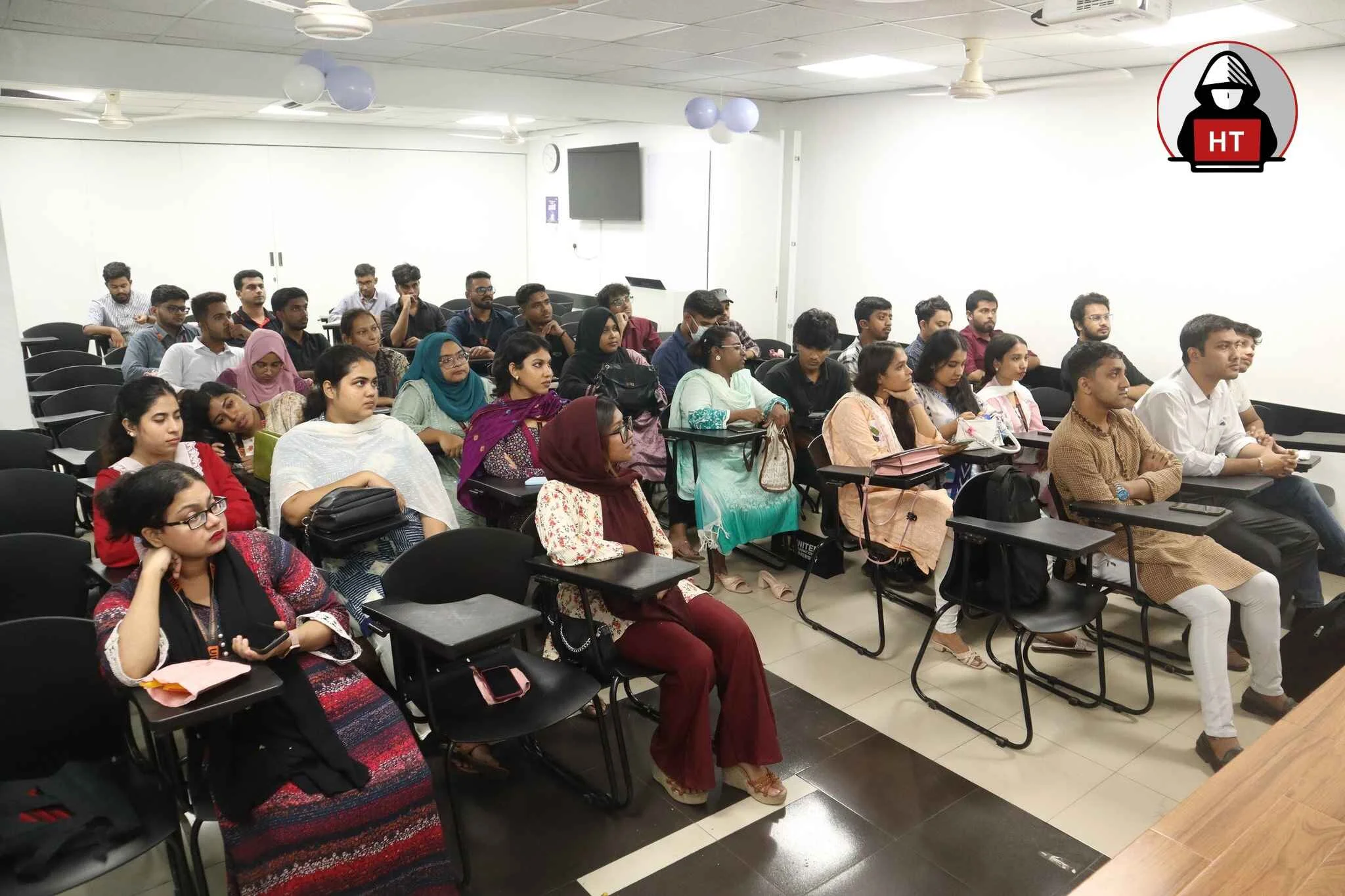As cyber threats become more sophisticated, organizations recognize the need to simulate real-world attacks on their infrastructure. Red teaming and penetration testing are two advanced security practices that help organizations identify vulnerabilities, understand their attack surface, and improve defenses. While these two fields overlap, they differ in scope, methodology, and end goals. Penetration testing, or “pen testing,” focuses on identifying and exploiting specific vulnerabilities in a controlled environment to assess an organization's security posture. Red teaming, however, goes a step further, using tactics, techniques, and procedures (TTPs) that mimic adversarial behavior, challenging the organization’s entire defensive ecosystem by testing its detection and response capabilities. For professionals interested in this dynamic field, specialized courses in red teaming and penetration testing offer an in-depth, hands-on approach to developing these skills.
 Top Ranked Cyber Secuirty Course By HACKING TEACHER
Top Ranked Cyber Secuirty Course By HACKING TEACHER


































AI Powered Full Stack Web Development Course
Learn AI powered web development and futureproof your career to lead in an AI dominated tech industry.
Red teaming and penetration testing may seem similar on the surface but differ in their objectives, approaches, and depth of coverage. Penetration testing is typically a controlled process with specific goals, such as testing a network segment, web application, or system for exploitable weaknesses. Courses that cover red teaming provide in-depth training on social engineering, including how to create effective scenarios and avoid detection.
It’s often limited in scope and focused on discovering known vulnerabilities in a specific timeframe. Red teaming, however, is broader and more holistic, aiming to simulate an adversarial attack against the organization as a whole. Rather than focusing solely on technical vulnerabilities, red teams use social engineering, physical access attempts, and other tactics to test people, processes, and technology, exposing gaps in detection and response.
This broader approach means that red teaming exercises require more creativity, adaptability, and an understanding of human and organizational behavior, beyond technical hacking skills. A red teaming course often covers how to employ these techniques in a coordinated manner, creating attack chains that simulate real-world threat actors. By understanding these techniques, students gain insights into how adversaries operate and learn how to anticipate, detect, and respond to attacks effectively.
Other red teaming tools focus on specific techniques, such as PowerShell Empire for post-exploitation, SharpHound for Active Directory enumeration, and Mimikatz for credential harvesting. Learning these tools requires practice and understanding, as each has unique features and capabilities. A high-quality course not only introduces these tools but also provides guidance on how and when to use them, helping students understand their strengths and limitations.
































Highest Salary
Average Salary
Hiring Partners


+ Unlimited Pwnbox usage
+ CPE credits submission
+ Unlimited Pwnbox usage
+ CPE credits submission
+ Unlimited Pwnbox usage
+ CPE credits submission
+ Unlimited Pwnbox usage
+ CPE credits submission
The Hacking Teacher Certification teaches educators about teaching ethical hacking and cybersecurity with the proper skills. This program offers extensive training on some of the most technology pressing issues facing the cyber security world today including penetration testing, threat analysis and secure coding. It is ideal for IT professionals and trainers to ensure that all knowledge is transferred for audiences to inspire the next generation of cybersecurity experts.

We focus on essential exploiting topics such as SQL Injection, Wireless Networks, IoT Hacking, Cloud Computing, social engineering, sniffing, and session hi jacking.










Enterprise Attack Simulation Training is an opportunity to practice simulating cyberattacks against corporate networks on a hands-on basis. Participants learn how to find vulnerabilities, to exploit weaknesses and to evaluate system defenses using advanced tools and methodologies.

The practice is in live, not simulated virtual IT labs built according to the leading vendors certifications, including: Apart from these CompTIA, Microsoft, Cisco, VMware etc." Our labs were designed to be interactive, and targeted towards a lot of real world experience so learners can hone their practical skills. We work with subject matter experts on networking, security, cloud computing and more, and we create and deliver labs based on these core IT competencies.











Hacking teacher Learning is here to ensure that you don’t get left behind in a world of technology that is too quickly changing. On a day to day basis, we’re recording and sharing content that can impact your bottom line.

Threat intelligence plays a significant role in red teaming, providing context on the tactics, techniques, and procedures used by real-world adversaries. By analyzing threat intelligence, red teamers can tailor their attacks to mimic specific threat actors, testing an organization’s ability to detect and respond to these tactics. Threat intelligence includes information on indicators of compromise (IOCs), such as IP addresses, domain names, and file hashes associated with malicious activity.
It also includes threat profiles, which detail the motives, methods, and capabilities of different threat groups. A well-designed red teaming course teaches students how to gather, analyze, and apply threat intelligence to their scenarios. This skill is crucial for creating realistic simulations that help organizations understand how they might be targeted by specific adversaries. Advanced courses may include exercises where students develop threat actor profiles, build attack strategies based on real intelligence, and adapt their tactics based on the organization's defensive measures.
Ethical hacking requires a strong understanding of legal and ethical considerations. Unauthorized hacking is illegal and can result in severe consequences. Both red teaming and penetration testing professionals must adhere to strict legal guidelines and ethical standards, ensuring that all activities are authorized, documented, and conducted with the organization's consent. A comprehensive course includes training on the legal aspects of hacking, covering topics like authorization, data protection laws, and the importance of reporting findings responsibly.
Ethical considerations are also crucial; red and penetration teamers must avoid actions that could harm an organization’s reputation or data integrity. For instance, red teams should avoid targeting sensitive personal data during social engineering campaigns and should exercise caution to prevent damage to systems during exploitation. Adherence to these standards ensures that red teamers and pen testers operate within legal boundaries and maintain the trust of their clients.
Completing a course in red teaming and penetration testing can open doors to various cybersecurity roles. Penetration testers, often referred to as ethical hackers, conduct assessments to identify and exploit vulnerabilities in a controlled setting. Red teamers work as part of an organization’s security operations team, running realistic adversarial simulations to assess an organization’s resilience to attacks.
Other related roles include cybersecurity analyst, security consultant, and vulnerability assessment analyst. Red teaming professionals may also find positions as threat hunters, focusing on detecting, analyzing, and responding to threats based on intelligence. Organizations with mature security postures often maintain dedicated red teams to perform continuous assessments, testing the effectiveness of their defenses. As organizations place greater emphasis on proactive security, demand for skilled red teamers and penetration testers is expected to grow, making these careers both challenging and rewarding.
While a red teaming or penetration testing course provides foundational skills, certifications can further enhance your credibility and open additional career opportunities. Common certifications for penetration testers include CompTIA PenTest+, Offensive Security Certified Professional (OSCP), and EC-Council’s Certified Ethical Hacker (CEH). For those interested in red teaming, certifications like Offensive Security Certified Expert (OSCE) and Red Team Operator (RTO) validate advanced skills in adversarial simulation.
Some courses align with these certification requirements, covering the knowledge areas needed to pass the exams. Earning these certifications can give you a competitive edge, as employers often recognize them as evidence of practical skills and expertise in cybersecurity. Certification also demonstrates a commitment to professional development, as many certifications require periodic recertification and ongoing education to maintain.
A Red Teaming and Penetration Testing course is designed to teach individuals the skills and techniques required to conduct ethical hacking and simulate real-world cyberattacks on an organization’s infrastructure. Red teaming involves simulating an advanced, persistent threat (APT) to test an organization’s defenses, while penetration testing focuses on identifying and exploiting specific vulnerabilities in systems, networks, and applications.
This course covers methodologies used in both approaches, including reconnaissance, vulnerability scanning, exploitation, post-exploitation, lateral movement, and reporting. It provides practical, hands-on experience using industry-standard tools and techniques to assess an organization’s security posture.
Before enrolling in a Red Teaming and Penetration Testing course, it is recommended that participants have a foundational understanding of networking, system administration, and cybersecurity concepts. Familiarity with TCP/IP, firewalls, routers, and intrusion detection systems (IDS) will be helpful.
Experience with common penetration testing tools such as Metasploit, Nmap, and Burp Suite, as well as basic knowledge of ethical hacking and vulnerability assessment practices, is also recommended. For individuals new to ethical hacking, completing introductory courses like CompTIA Security+ or Certified Ethical Hacker (CEH) can provide the necessary background before undertaking more advanced Red Teaming techniques.

Interview wifi Hacking

Life of Hacking Teacher

Microsoft on Vishal Sharma

Software Engineer at CodeBl
“The Red Team Pentesting – VAPT course at Hacking Teacher was enlightening. The instructors’ expertise and practical approach made it easy to understand complex concepts. Highly recommended for those serious about offensive security.”

Software Engineer at TechSphere
“The hands-on labs and real-world examples were invaluable. Essential for cybersecurity professionals aiming to boost their offensive security skills.”

Data Analysis at CodeWarp
“I highly recommend the Red Team Pentesting – VAPT course at Hacking Teacher. Its comprehensive curriculum and focus on practical application make it an excellent choice for cybersecurity training. A must-have for anyone in the field.”
FAQ
Our online courses are tailored to your specific needs, whether you are an experienced senior executive or a rookie leader.
Lorem ipsum, dolor sit amet consectetur adipisicing elit. Eum laborum qui tempora numquam!
A Penetration Testing Course is a training course designed to teach how to run an actual (ethical) Penetration Test. A Penetration Testing Course educates students about how to find and take advantage of the vulnerabilities in the system, network or application in a controlled, ethical manner. The book provides a lot of different methods one can use to make this sort of security evaluation: scanning, exploiting vulnerabilities, simulating cyberattacks to discover vulnerabilities before malicious hackers do.
A Penetration Testing Course can take any duration depending on the program. The time it takes can range from anything from 1 month, for intensive, boot camp types of courses to 3–6 months, for more depth and complete courses. However some self paced online courses, depending on individual learning speed, may take longer time.
In order to do a Penetration Testing Course, you are supposed to already have a basic understanding of networking, operating systems, and cybersecurity. A good knowledge of common protocols (for instance TCP/IP) and familiarity with Nmap, Burp Suite and Metasploit will be convenient. CompTIA Security+ or CEH (Certified Ethical Hacker) is a suggested foundational certification that some courses may not require.
The best Penetration Testing Courses include: A great Offensive Security certification that requires hands-on labs and real-world penetration testing skills, the OSCP (Offensive Security Certified Professional). But it will allow you to eCPPT (Certified Professional Penetration Tester) at Learn Security which offers a more comprehensive and practical approach. The Courses for beginners to advanced learners, offered by Cybrary for Penetration Testing and Ethical Hacking.
Yes, classic Penetration Testing Courses ranging from one to two months in length are possible, as well as boot camps, if you look hard enough. Short time frame courses usually revolve around key skills and practical exercises and the learning curve can be steep, so you’d better be prepared to dedicate a lot of time and effort. Yet, a deep dive course such as OSCP takes much longer.
One diploma is not better than the other, so there is no specific "diploma" per se you should look for, however, diplomas in Cybersecurity or Ethical Hacking from reputed institutions would be a great place to start!
These roles are called Penetration Tester, Ethical Hacker, Security Analyst, Red Team Operator. Demand for these roles is high and these are often well paid. Self-Learning: In other words, it is possible to self-study Penetration testing via books, online tutorials and practice platforms (TryHackMe, Hack The Box etc).
For the beginners, certifications like CompTIA PenTest+, eJPT (eLearnSecurity Junior Penetration Tester), CEH (Certified Ethical Hacker) certifications will be great. Training Requirements - The prerequisite is basic knowledge of networking, operating systems (Linux/Windows), and programming (Python, Bash) and security fundamentals. Since, then again, access to labs and practice environments is critical.
Some criteria for a good course is that it should cover everything from vulnerability assessment to exploit development to network security and web application testing. A good course should be able to empower you with handsọn labs, tools such as Metasploit or Burp Suite and scenarios similing real world endpoint testing. Meanwhile, it also means that content is updated with industry standards. Search for courses taught by experienced instructors and have a certification or practical exam to present your skills. A high focus on report writing and exposing ethical hacking practices is especially necessary in order to guarantee the course properly prepares you for professional responsibilities.
OSCP is recognised around the world as one of the best and most respected for penetration testing certifications. It focuses on practical skills and candidates have to hack into several machines within a 24 hours period of time. Heavily praised, this might not fit all people, in particular beginners that lack basic knowledge about networking or Linux. OSCP is a fantastic choice for the advanced learner looking for real world penetration testing experience. If you have something in mind in terms of career goals, or if you are at a different skill level, courses like PNPT (ethics), CRTP or CEH might be more your speed.
It’s true that penetration testing training is tough; the topic is technical and requires practical problem solving. It holds various operating system, understanding of networking concepts and tools. Courses such as OSCP are a grueling exercise that demands persistence and hours of study after the fact. But, it depends on where you start from, and it is easier if you have a solid background in IT, cybersecurity and programming. The effort is the reason why working in the field is rewarding, and you learn a lot from the effort in skills you can apply out of school.
There are various courses on penetration testing both offline as well as online. Specialized courses can be taken on popular platforms like Offensive Security (OSCP), elearnsecurity and SANS Institue. TryHackMe, Hack The Box Academy, and Udemy all have beginner friendly options. Penetration testing courses are also offered within Universities as well as boot camps within their Cyber programs. In choosing a course, ensure that the instructor has some credentials, the course content is not all theory but incorporates hands on labs or real world scenarios.
The best penetration testing course depends on the skill level and what you’re looking to use it for. eLearnSecurity offers a great learning path for beginners too: eJPT (eLearnSecurity Junior Penetration Tester). OSCP and PNPT are things that intermediate learners can look at, given that they are both practical hacking scenarios in a real world scenario. For advanced professionals, CRTP, SANS courses SEC560, or Offensive security’s advanced certifications are available. The best courses must be evaluated according to their content, the difficulty of their subjects and the way they relate to your career aspirations.